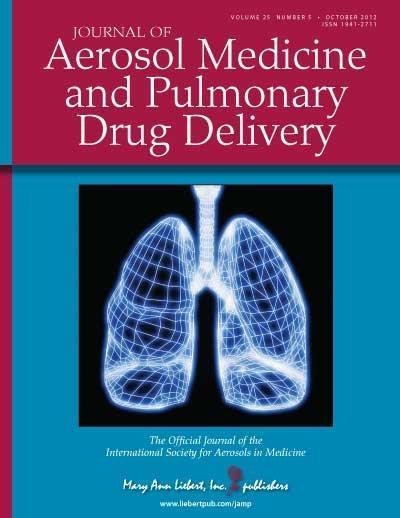New Rochelle, NY, October 4, 2012—Essential medications can be delivered as inhaled drugs to critically ill patients in the Intensive Care Unit (ICU) who require mechanical ventilation to breathe. Aerosol drug delivery is highly complex, however, and if not done properly the medication will not reach the lungs and therapy will be ineffective. The efficacy and safety of aerosol delivery of drugs commonly used in the ICU such as antibiotics, diuretics, and anticoagulants is explored in depth in a review article published in Journal of Aerosol Medicine and Pulmonary Drug Delivery, a peer-reviewed journal from Mary Ann Liebert, Inc., publishers. The article is available free online on the Journal of Aerosol Medicine and Pulmonary Drug Delivery website.
Arzu Ari, PhD, RRT and James Fink, PhD, RRT, Georgia State University (Atlanta) and Rajiv Dhand, MD, University of Tennessee Graduate School of Medicine (Knoxville) state that the successful use of bronchodilator therapy in ventilator-dependent patients has led to growing interest in the delivery of other aerosolized forms of medication to improve outcomes for patients in the ICU that require mechanical ventilation. In the article "Inhalation Therapy in Patients Receiving Mechanical Ventilation: An Update," the authors explore the complexities of aerosol therapy in this patient population and the advances in drug delivery devices that are contributing to its increasing use and success.

Journal of Aerosol Medicine and Pulmonary Drug Delivery is an authoritative peer-reviewed journal published bimonthly in print and online. It is the Official Publication of the International Society for Aerosols in Medicine. The Journal is the only authoritative publication delivering innovative articles on the health effects of inhaled aerosols and delivery of drugs through the pulmonary system. Topics covered include airway reactivity and asthma treatment, inhalation of particles and gases in the respiratory tract, toxic effects of inhaled agents, and aerosols as tools for studying basic physiologic phenomena. Complete tables of content and a sample issue may be viewed on the Journal of Aerosol Medicine and Pulmonary Drug Delivery website.
(Photo Credit: © Mary Ann Liebert, Inc., publishers)
"Newer drugs, such as antibiotics, will require better control of dose and delivery if they are to be successful in treating the intubated patient." says Editor-in-Chief Gerald C. Smaldone, MD, PhD, Professor and Chief, Division of Pulmonary and Critical Care Medicine at SUNY-Stony Brook.